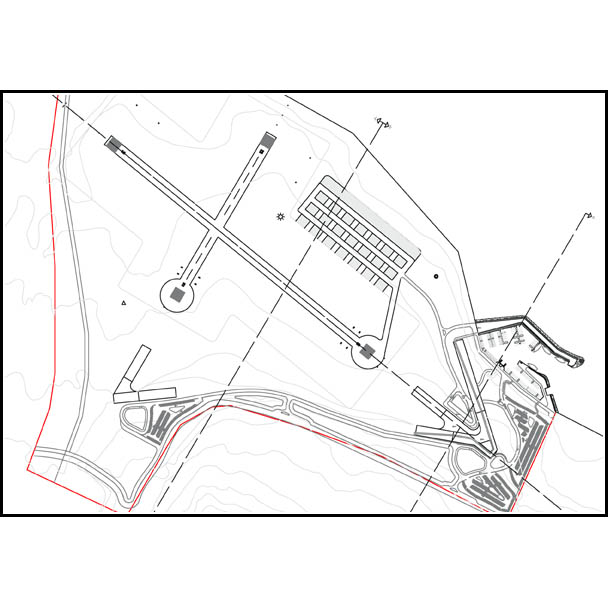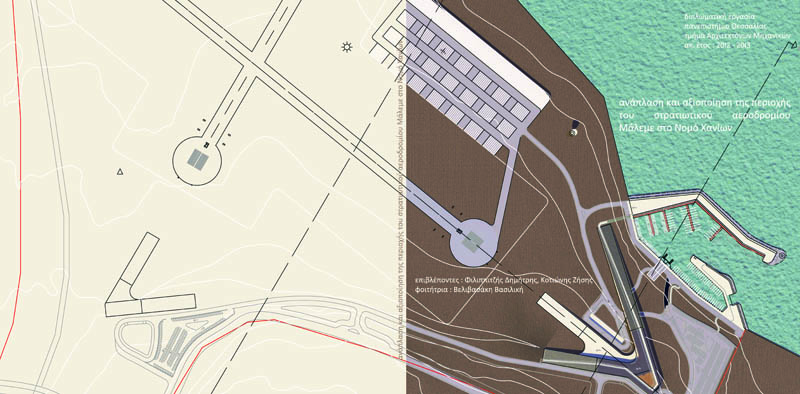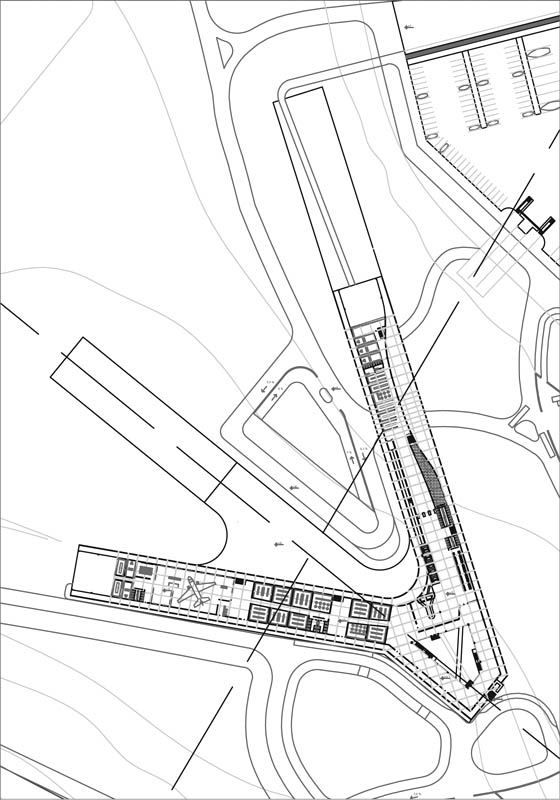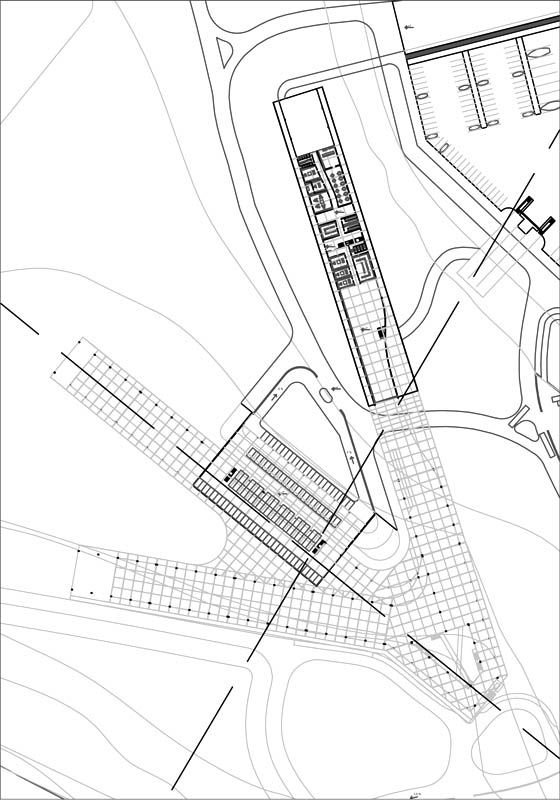This thesis focuses on Egnatia Highway, of 655km length, that crosses North Greece from east to west. In the attempt to understand the highway as a constructed landscape, after reviewing and recording all the elements that compose it, a few transitional places between nodes and cities were found, that can serve the needs of the users.
Firstly it was considered necessary the installation of interventions on both sides of the highway. The solution of the compositional principle emerged from the road architecture that occurs on the current state of the highway. The seamless confrontation of the “tube” (in which somebody enter and cannot escape from it, except of when he wants to exit the node and approach his destination), were the main factor that more than one transitional place were designed, but a network of such interventions that accompany the Egnatia Highway all along.
In order to distinguish the uses, all interventions differ according to whom they serve each time, and the duration of the use in each one. According to the previous, the need of repairing a vehicle is insulated from the biological need of the driver. Therefore, it forms a concentration unit of all factors that concern the repairing of the vehicle. Following the same structure, interventions that concern the driver were designed. These facilities provide the driver the possibility to rest on the landscape, that normally passes, and to seek for potential passengers for the rest of his trip. These particular “pauses” allow the adoption of social relations, serving as meeting points on the highway. Furthermore the last case functions on its own as a double solution for the driver and the vehicle.
In the network developed along on Egnatia Highway, the interventions exist either independent as scattered on the highway or in combination, where necessary.
Supervisors: Gavrilou Evelyn, Paniyiris Costis
Reference Number: 424












Crete is located in the middle of eastern basin of Mediterranean, on the crossroad of air and sea transportation from eastern to western and northern to southern and reverse. This is the reason why it constitutes a great base for aeronautical operations towards every direction. These characteristics give a special strategic significance so that Crete turned out to be the main interest of British and Hitler in the beginning of second world war.
The subject of this diplomatic work is the regeneration of military airport in Maleme in Chania. The position, where it is developed is preferential not only for Greece but for Southeastern Europe as well. Maleme airport was the main airport of Chania till I970, that a new airport was constructed in Souda and the old one in Maleme was abandoned. Since then, it was used by Air Forces for butts until 2003.
In conclusion, this regeneration consists of many facilities as : aerosport center, air museum, small touristic airport, conference center, yacht club, hotel and touristic port. In that way, the remembrance of this historic place will stay alive and the construction of all these facilities will work as an attraction and will create the conditions needed to attract tourism of high economic level. Finally, the territory will constitute an ideal destination for conferences and meetings, combining conference facilities with airport, museum and commerce.
Supervisors: Kotionis Zissis, Philippitzis Dimitris
Reference Number: 473

